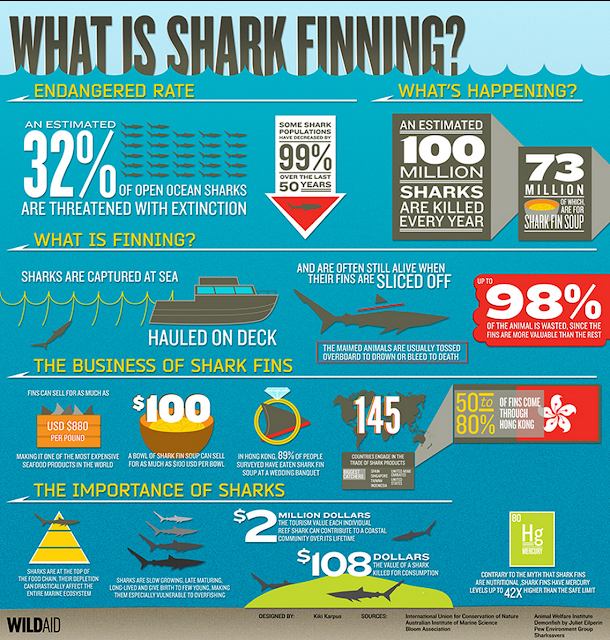 |
| Image Coutesy: Wild Aid |
- Central Marine Fisheries Research Institute (CMFRI), Kochi, has drawn up an action plan — Guidance on National Plan of Action (NPOA) for Sharks in India — in line with the International Plan of Action for conservation and management of sharks, developed by the Food and Agriculture Organisation.
- Jet Airways was recognized with the Henry Spira Corporate Progress Award for trailblazing the ban on shark fins as cargo.
- It is the first airline in India to independently implement this policy, thereby making a remarkable impact on the shark fin industry that often targets protected species of sharks
Reasons for Shark decline
- Anthropogenic reasons
- Pollution
- Hunting
- Biological features like
- Slow growth,
- Large size and longevity,
- Slow turnover of generations
- Late maturation
- Production of few (but well-developed) off-springs
- 160 species of sharks are known to occur in India’s commercial fishing zone.
- Main species used in commercial industry
- Requiem sharks,
- Hammer-heads,
- Threshers,
- Mackerel sharks,
- Bamboo sharks
- Hound sharks
Conservation measure for sharks
- 10 shark species have been included in the Schedule I of the Indian Wildlife (Protection) Act. - for complete list under schedule I click here.
- Trade of shark fins and plate is regulated
- Ban has been imposed on shark finning and export/import of shark fins in the country.
- Shark finning refers to the removal and retention of shark fins and the discard at sea of the carcass. The shark is most often still alive when it is tossed back into the water. Unable to swim, the shark slowly sinks toward the bottom where it is eaten alive by other fish.
- Database on fishery
- Abundance and biology of sharks
- Utilisation
- Market channels and trade
- Undertaking coordinated, need-specific research and development programmes,
- improve coordination and consultation between management, research and stakeholder groups
- Review of existing conservation and management measures and implement improved strategies.

0 comments:
Post a Comment